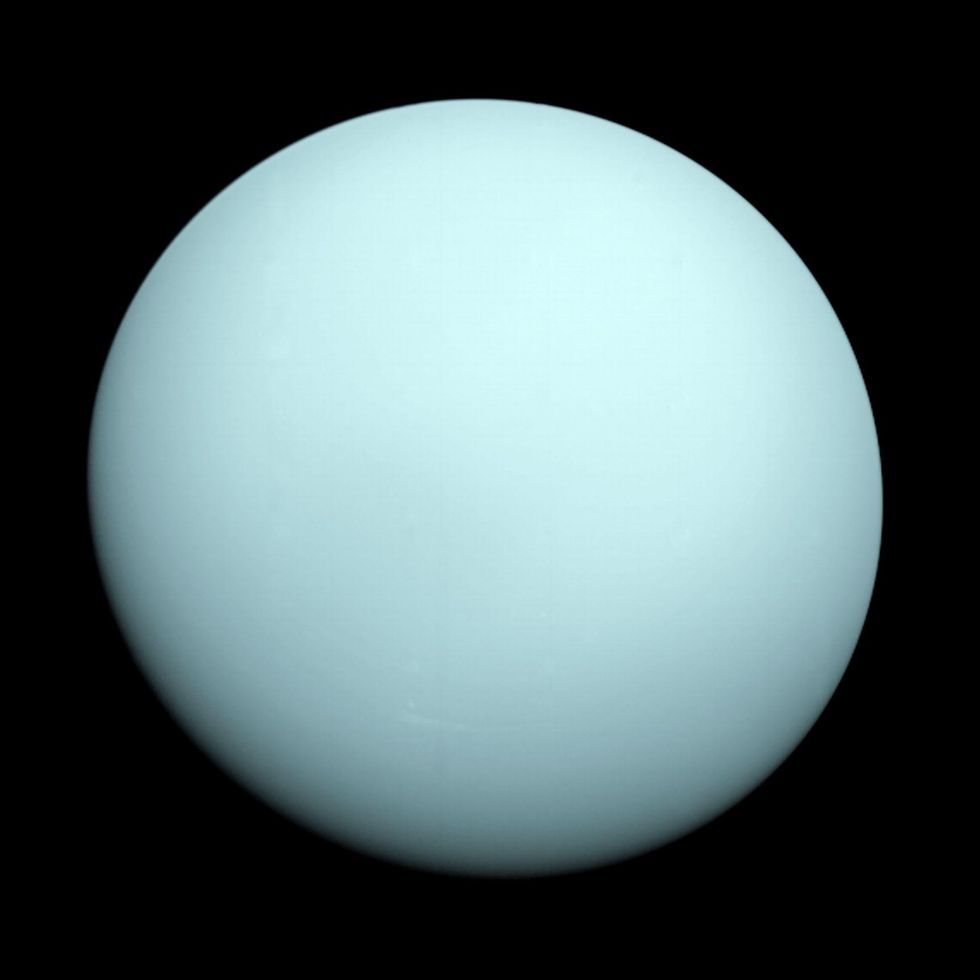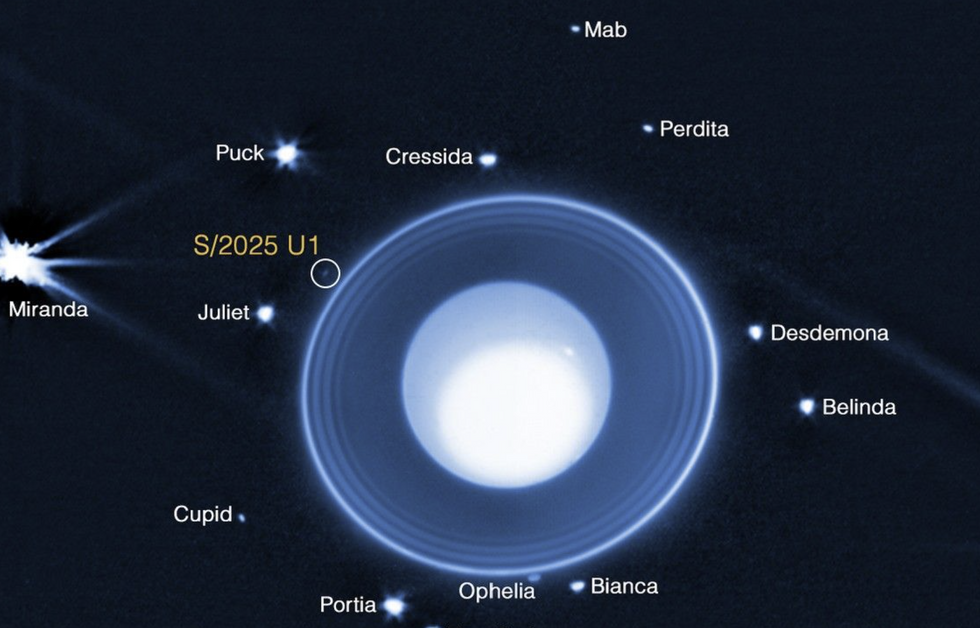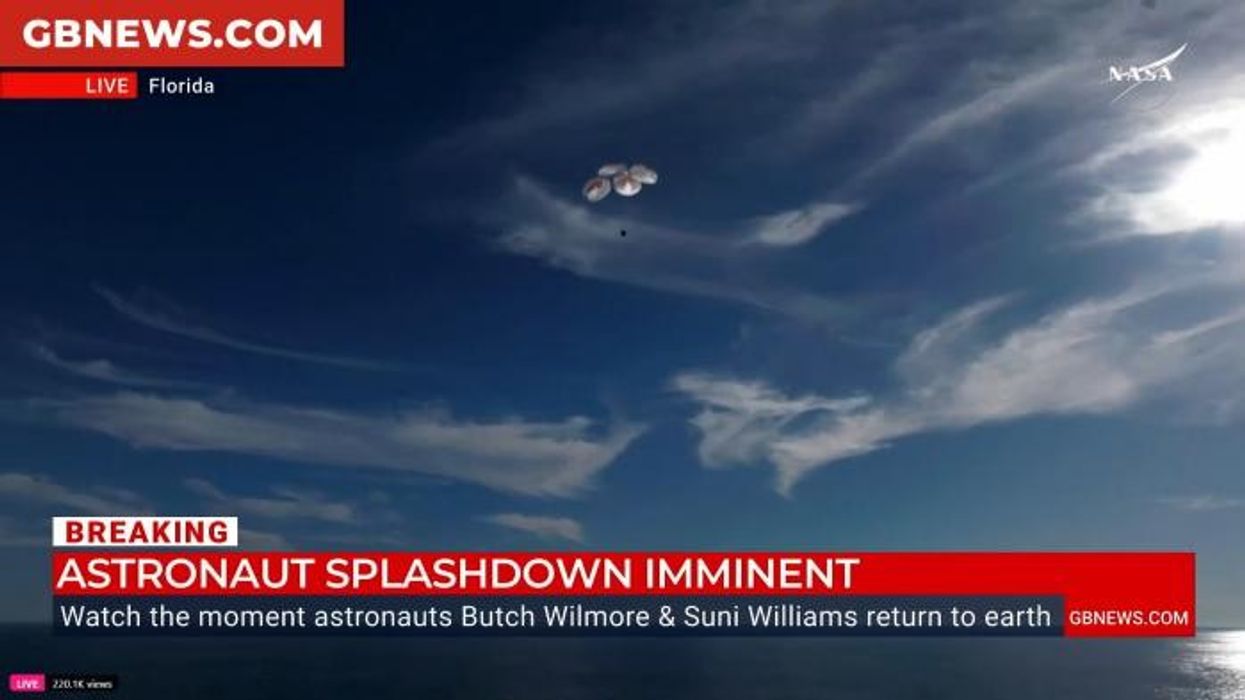Astronomers make 'significant discovery' as they spot new moon orbiting Uranus

A small celestial body was discovered circling the ice giant
Don't Miss
Most Read
Astronomers have detected a previously unknown moon circling Uranus, marking a notable addition to our understanding of the ice giant's satellite system.
The James Webb Space Telescope identified the tiny celestial body on February 2, with Nasa confirming the discovery.
The newly found moon, temporarily designated S/2025 U1, spans approximately 10 kilometres in diameter.
**ARE YOU READING THIS ON OUR APP? DOWNLOAD NOW FOR THE BEST GB NEWS EXPERIENCE**
This diminutive size places it among the smallest satellites in Uranus's collection. The discovery brings the total count of confirmed moons orbiting Uranus to 29.
Despite its modest dimensions, researchers consider the finding particularly noteworthy given that the moon had remained undetected by previous observations, including those from earlier space missions.
Maryame El Moutamid, who leads the investigation into Uranus's rings and moons at the Southwest Research Institute in Colorado, attributed the moon's previous invisibility to its minute proportions.
"It's a small moon but a significant discovery, which is something that even NASA's Voyager 2 spacecraft didn't see during its flyby nearly 40 years ago," she stated.

Uranus, seen from Voyager 2, could have a new moon
| PAMatthew Tiscareno from the SETI Institute in California, another researcher involved in the project, highlighted the unique nature of Uranus's satellite system.
"No other planet has as many small inner moons as Uranus," he noted.
Tiscareno suggested that the "complex inter-relationships" between the planet's moons and its faint ring system indicate Uranus may have experienced a turbulent evolutionary past.
The satellite maintains a nearly circular path around Uranus at a distance of approximately 56,000 kilometres from the planet's core. This orbital configuration places it amongst the ice giant's inner moon collection.
LATEST DEVELOPMENTS

S/2025 U1 was spotted surrounding the planet
|NASA
Following established astronomical tradition, all satellites of Uranus receive names drawn from characters in works by William Shakespeare and Alexander Pope.
The International Astronomical Union, which governs the formal designation of celestial objects, will oversee the official naming process for S/2025 U1.
NASA has indicated that the moon will receive its permanent name once the IAU completes its approval procedures.
Until then, the temporary designation will remain in use for scientific reference.
The Voyager 2 spacecraft made history in 1986 when it became the first human-made probe to visit Uranus.
During that pioneering flyby, the mission captured over 7,000 images and revealed 11 previously unknown moons, along with two additional rings around the planet.
The latest discovery suggests more small satellites may remain hidden in orbit around Uranus.
Tiscareno expressed optimism about future findings: "There's probably a lot more of them and we just need to keep looking."
The James Webb Space Telescope's ability to detect such a small object demonstrates its enhanced capabilities compared to earlier instruments, opening new possibilities for discovering additional moons around the outer planets.











